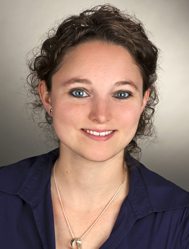
My name is Esther Stenau and I work at the Division for Computer assisted medical interventions at the German Cancer Research Center (DKFZ) in Heidelberg. During my studies in Physics at the Heidelberg University and the University of Auckland, I became interested in the field of medical research. While I focused mainly on radiation therapy and the calculation of non-coplanar treatment plans during my master’s thesis, I spent the last three years working on intraoperative registration with fluorescent markers as a part of my doctoral thesis.
I handed in my thesis last month and was happy to present part of this work at the ISCAS conference in Barcelona. I’m very glad, that our work received the Koh Young Best Paper Award.
The vision of our research project is to combine strategies from various fields, to improve laparoscopic interventions. The interventions are minimally invasive and have several advantages such as, faster wound healing and reduced pain for the patients. However, intraoperative orientation during such interventions remains difficult and it is hard to locate structures of interest. Intraoperative registrations of laparoscopic video with preoperative CT or MR images can enable surgeons to display underlying structures and improve the orientation perspective during surgery. But the usage of these traditional registration techniques in clinical routine is difficult. The current published methods for intraoperative registration have disadvantages such as long preparation or online computation times, need of additional hardware and robustness of the registration in presence of the challenging clinical conditions.
I aim to improve the robustness of intraoperative registrations with fiducial markers. Although registration with such markers has many advantages like real-time capability, the detection of these markers is easily disturbed by smoke, blood or tissue. To overcome these limitations, we developed new, near-infrared fluorescent markers that are also opaque in CT imaging and hence can be used as fiducials for intraoperative registration. Due to near-infrared light’s better penetration through smoke, blood and tissue, these markers can better be detected when occluded even when traditional fiducial markers fail.
During my time at the DKFZ I realized the importance of inter-disciplinary collaborative research. Without the physical understanding of absorption and properties of near-infrared light or knowledge of developments in computer vision on fast registration algorithms, along with the knowledge and feedback of clinicians and the cooperation with the radiopharmaceutical department, this project would not have been possible. I believe that for a real impact on clinical outcomes in medicine, cross-disciplinary collaborative efforts are indispensable.

Leave a Reply